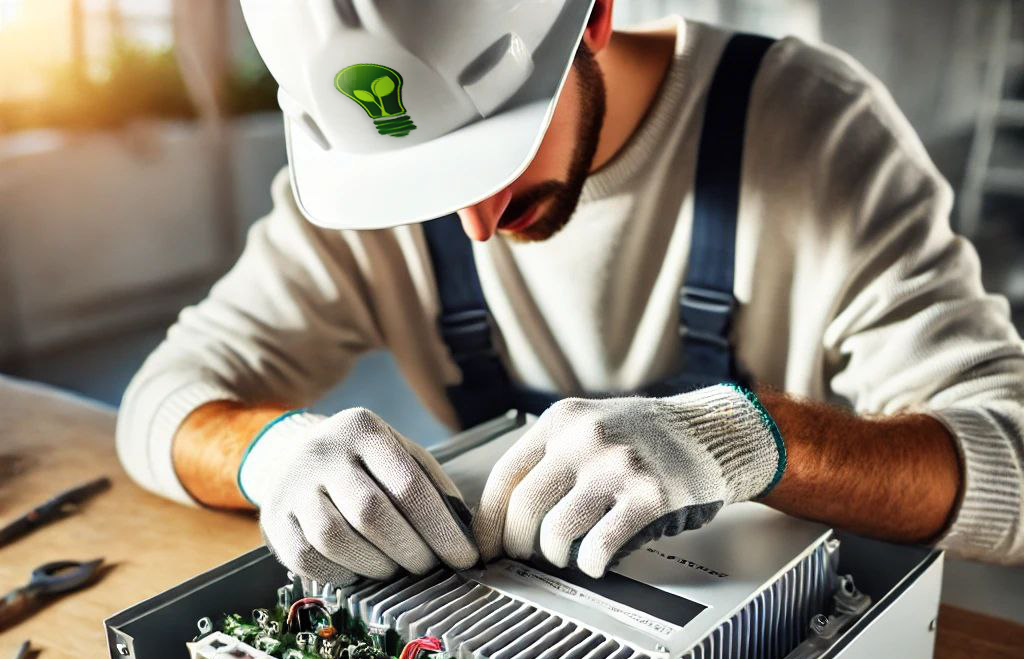Troubleshooting Guide for Solar Inverter Faults
Fault 101: U-CCmax (DC Voltage Too High)
- Description: The Solar Inverter is certified for a maximum open-circuit voltage of 680V. Components are designed with a sufficient safety factor. If exceeded, it stops feeding into the grid.
-
Remedy:
- Check the sizing of your PV generator. Too many modules may be connected in series.
- Reduce the number of modules and re-commission the system.
Fault 102: Isolation (Isolation Fault)
- Description: Before each start-up, the Solar Inverter checks for ground leaks or insulation errors. If detected, feeding into the grid is stopped.
-
Remedy:
- Check the PV system for possible insulation faults (e.g., crushed DC cables).
Fault 103: AFI>30mA (Differential Current Jump)
- Description: Equipped with an AFI device sensitive to all currents, a differential current jump of >30 mA has been detected.
-
Remedy:
- Inspect the PV system for potential insulation errors.
Fault 104: AFI>0.3A (Absolute Differential Current Jump)
- Description: A differential current jump greater than 300mA was detected during operation.
-
Remedy:
- Check the PV installation for possible insulation issues.
Fault 201: Overvoltage Error
- Description: Constantly monitors AC network quality. High voltage peaks during grid feed-in will cause the inverter to stop and attempt to restart.
-
Remedy:
- The inverter will restart automatically after the fault is cleared. If the error occurs often, consult your electricity provider.
Fault 203: UCA1>15% (AC Voltage Too High)
- Description: Monitors the voltage level of the feeding phase. If it exceeds the maximum allowable value, it stops feeding into the grid.
-
Remedy:
- Verify the configuration of the grid connection (energy meter) and discuss with your electricity provider about network stability.
Fault 204: UCA1<min (AC Voltage Too Low)
- Description: If the minimum allowable voltage is exceeded, the inverter stops feeding into the grid.
-
Remedy:
- Consult with your electricity provider about network stability and configuration.
Fault 210: Frq1>max (Frequency Too High)
- Description: Constantly monitors the grid frequency. If it exceeds the allowable value, the inverter stops feeding into the grid.
-
Remedy:
- Consult with your electricity provider for details on network stability.
Fault 211: Frq1<min (Frequency Too Low)
- Description: Similar to fault 210 but for low frequency.
-
Remedy:
- Same as for Frq1>max, consult your electricity provider.
Fault 212: DC Quota (Increased DC Content)
- Description: Monitors the quality of accumulated current. If increased DC content is detected, the inverter stops feeding into the grid.
-
Remedy:
- Restart the Solar Inverter. If the error repeats, contact technical support.
Fault 301: AFI-Over (Fault Current Measurement Range Exceeded)
- Description: The integrated fault current sensor was used outside its measurement range.
-
Remedy:
- Restart the Solar Inverter. Contact technical support if the error persists.
Fault 302: Monitoring Error
- Description: The redundant monitoring unit detects deviations or errors in the regulation's measured values.
-
Remedy:
- Restart the Solar Inverter. Contact technical support if the error repeats.
Fault 303: Overtemperature (Warning)
- Description: Designed for ambient temperatures up to +40°C. Feeding power is linearly reduced upon reaching a pre-set temperature threshold of the heat sink.
-
Remedy:
- Find a more suitable installation location. Clean the Solar Inverter if dirt hampers cooling.
Faults 401-422: Various Communication and Configuration Errors
- Description: Errors related to SD card detection, CAN communication failures, SMTP server connection issues, DNS failures, and HTTP protocol errors.
-
Remedy:
- Restart the Solar Inverter for immediate issues. Verify network settings, ensure proper cable connections, and consult technical support for persistent problems.
9xx: Maintenance Error
- Description: An error related to maintenance has occurred.
-
Remedy:
- Disconnect and reconnect the Solar Inverter from the grid and solar generator. If the error repeats, contact technical support.
AT2700 AT3000 AT 3600 AT4500 AT5000
NT2500 NT3700 NT4200 NT5000
NT10000 NT11000 NT12000
PT30K PT33K
